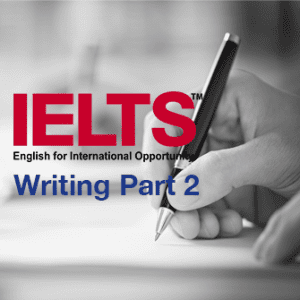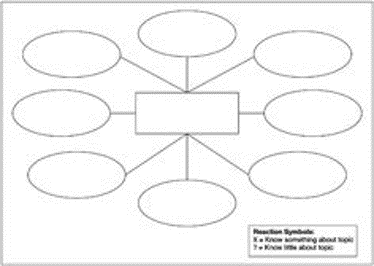
Writing Task 2 requires you to write an essay in a minimum 250 words in 40 minutes. You should aim to write between 260 and 300 words. Click here to go to Writing Task 1.
An essay is a piece of writing about a particular topic. It is a formal in style and is what students usually write when at school or at university.
Although there are different approaches to writing essays, good essays all share some common features
In the IELTS exam, you should aim to write an essay which illustrates your ideas on the topic and fully answers the essay question.
While, all good essays share similar structural features, there are different types of academic essays in the IELTS exam. In order to prepare for the exam, you should be familiar with the different types of academic essays listed below
“There are many different types of music in the world today. Why do we need music? Is the traditional music of a country more important than the International music that is heard everywhere these days?”[1]
For every IELTS essay, it is vital to read and understand the question. When you plan your essay, you must plan to answer all parts of the question. For example, a problem/solution essay that does not include any possible solutions cannot gain full marks.
Each IELTS essay includes the same instructions for supporting your ideas and providing evidence:
“Give reasons for your answer and include any relevant examples from your own knowledge or experience.”
You do not need specialist knowledge of a subject in order to get a high score in an IELTS Task 2 essay. You can use examples from your own knowledge and experience. However, you should not give personal examples from your own life. You should write in an ‘academic style’ and this does not involve personal details.
An essay must have clear, well-organised paragraphs that are relevant to the essay question. You should organise your ideas into 4 – 5 paragraphs.
When you plan and write your essay, you should make sure that each paragraph is relevant to the essay question. You do not need to include your own personal opinion in each paragraph, but you should make your ideas clear. Your paragraphs should follow a logical order and you should make sure there is a clear progression to your ideas.
Each paragraph in your essay must be clearly organised and structured. A well-constructed paragraph includes a topic sentence and ideas which support your topic sentence.
All good writers follow a process when writing. It is vital you develop these skills when preparing for your IELTS Academic exam. Following the stages in the writing process will help you to write coherent, concise essays that answer the question in a logical way.
In the IELTS exam, you should follow these steps:
The first stage helps you understand the question and make notes on all of your ideas related to the topic. This is a free process which helps you develop ideas.
There are different ways to make notes during the brainstorm stage; many writers choose to use a mindmap.

After you have finished the brainstorm stage, you should organise your ideas and make a paragraph plan. At the planning stage, you should select the best and most relevant ideas from the brainstorm. You probably won’t need all of the ideas from the brainstorm.
A paragraph plan should be notes of key words; you do not need to write full sentences in a plan. At the planning stage, you should also make a note of the examples and supporting ideas you will include in each paragraph.
After you have planned your essay, you are ready to write. Make sure you follow your plan and check that each paragraph has a clear, logical and coherent structure.
It is vital to edit your essay. At the editing stage, you should check your work for accuracy – grammar and vocabulary – and make sure that each paragraph is relevant and directly linked to the essay question.
If you find some mistakes when you are editing, you should cross out the incorrect answer and write in the correct answer. You are not permitted to take eraser fluid into the exam.
You should spend 40 minutes on Task 2 in the exam. It is important that you organise your time well, you need enough time to brainstorm, plan, write and check/edit your essay.
Here is an example of how to plan your time
| Brainstorm/Understand the question | 5 minutes |
| Plan | 5 |
| Write | 20 |
| Edit/Check | 10 |
While you are preparing for the IELTS exam, you should write practice essays in 40 minutes. This will give you a good idea of how you can use your time effectively during the exam.
IELTS essays are graded on 4 criteria.
Task response looks at how well you answer the essay question. The examiner checks that you have presented a clear position – your opinion and ideas are evident throughout your essay – and that you have supported your main ideas with examples.
Your essay should be logically organised and your ideas and paragraphs should link together. The examiner checks that you have one clear idea per paragraph and relevant supporting ideas and examples.
As part of this, the examiner also checks you have used a variety of cohesive devices to link paragraphs together and to link your ideas within each paragraph?
Lexical resource is about vocabulary. The examiner checks you have used words and phrases that are connected to the topic. You should use a wide variety of vocabulary and you should avoid repeating words. The examiner checks your work for errors in word type (noun/verb/ adjective) and spelling. If you make frequent errors in these areas, it is unlikely you will score a band 7.
You should include a variety of grammatical structures to express your ideas in your essay. The examiner will look at the range of different grammar points and their accuracy. If you make frequent mistakes with simple grammatical structures and punctuation, it is unlikely you will score a band 7.
Your essay receives a band score for each of the 4 criteria; this is then averaged to create a single band score for Writing Task 2. The band scores from Task 1 and Task 2 will be combined and weighted to give one overall band score for Writing.
Reading academic texts and essays will help you to become familiar with the style and structure you are expected to use in the exam.
Become familiar with the different types of essay for the IELTS exam. Review and study how to structure each type of essay and complete lots of practice essays.
Although you cannot anticipate the specific question in the IELTS, there are some common topic areas you can review before the exam. These include:
In order to get a band 7 in the IELTS writing exam, you must use complex grammatical structures. If the sentences that you use are too simple or contain too many mistakes, it is unlikely you will score a band 7. You should study grammatical structures that are presented at B2 and C1 level. These include the following:
If you are not sure what these are, speak to your teacher or look them up.
Learn and revise a variety of phrases to link your ideas. Practise using these phrases in a sentence and learn and understand the grammatical structure that follows a linking phrase.
For example, “In spite of increasing the number of buses available in the city centre, London still suffers from lengthy traffic jams during rush hour.”
The phrase here is “In spite of + verb+ing/noun phrase”
Practice using these:
